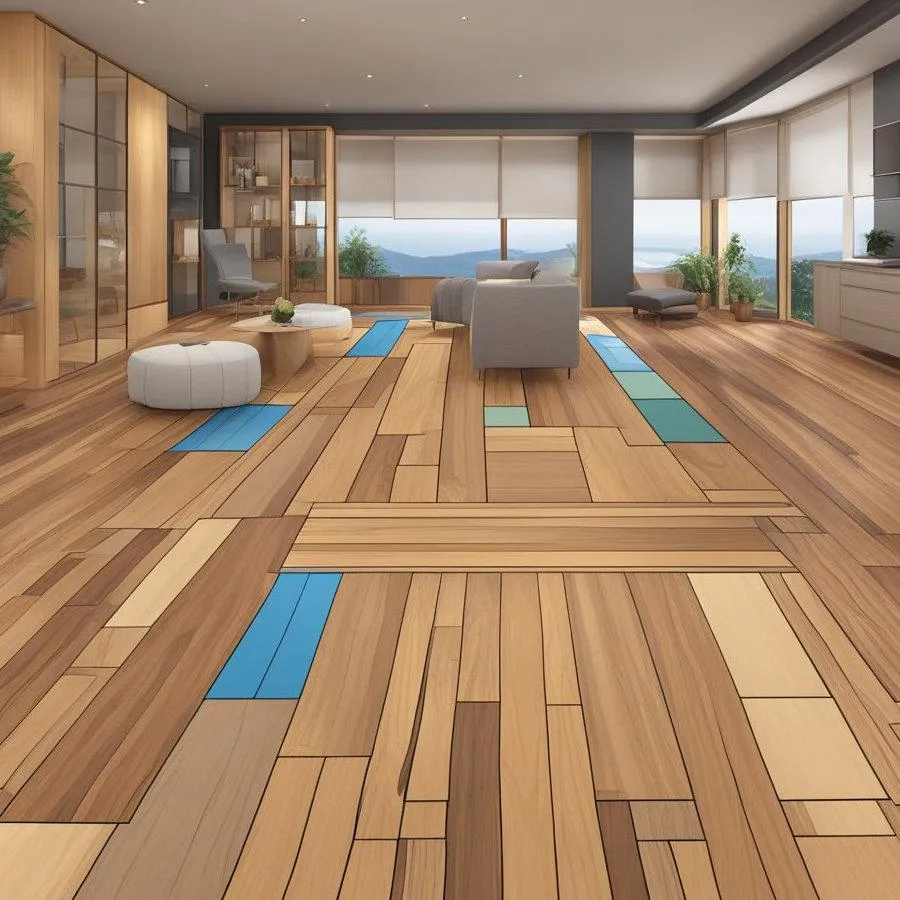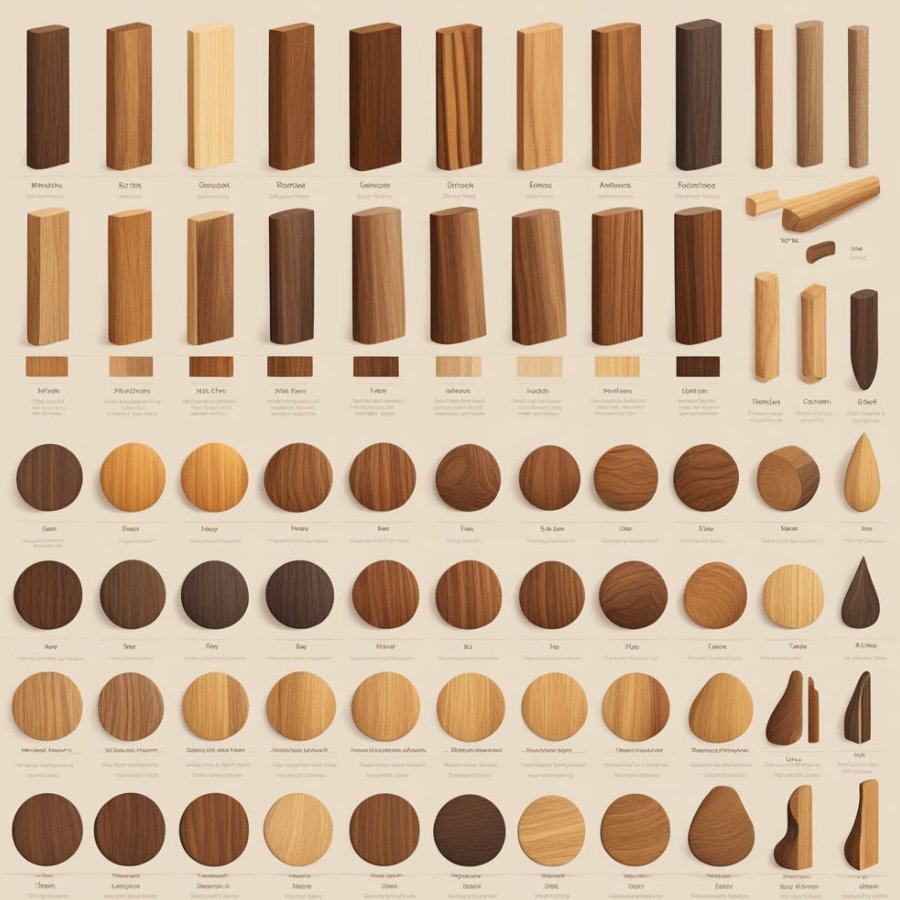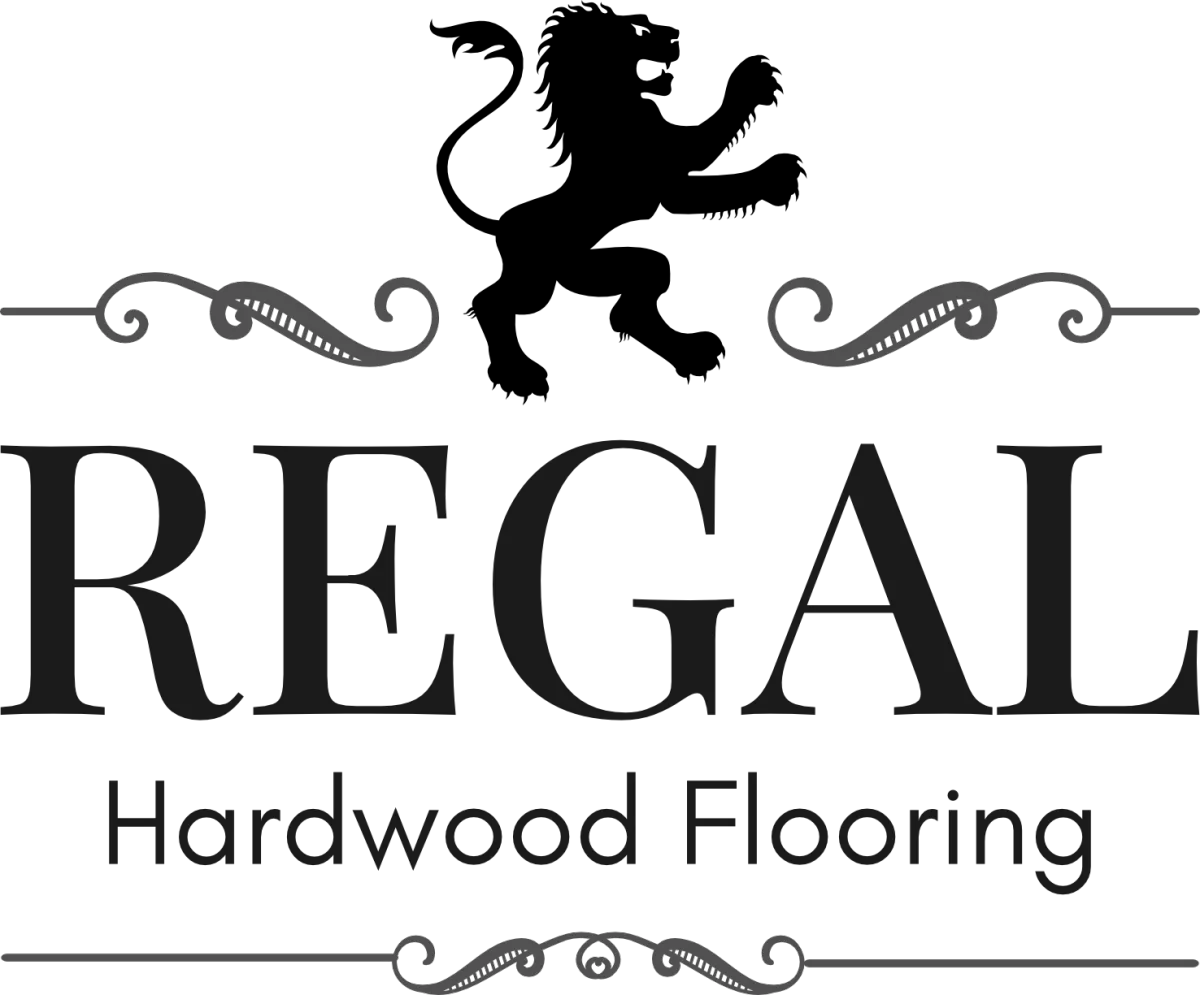
Hardwood Floor Species and Grades: Your Guide to Choosing the Right Type
Hardwood Floor Species and Grades: Your Guide to Choosing the Right Type
Hardwood floors are a timeless addition to any home, offering both beauty and durability. With an array of species available, each offering a unique appearance and set of characteristics, homeowners can choose a floor that not only matches their aesthetic preferences but also suits their functional needs. The natural grains and tones of hardwood floors lend a warm and classy touch to interiors, making them a favoured choice across different decorating styles.
Selecting the right type of hardwood floor involves understanding the differences between the species as well as the grades of wood, which affect the final look and performance of the flooring. Hardwood species like oak, acacia, and maple vary in hardness, resistance to wear, and ability to take on stains and finishes. On the other hand, grades, which are determined by the presence of knots, variations in pattern, and overall uniformity, also play a significant role in choosing a floor that will last for many years while aging gracefully.
Key Takeaways
Hardwood floors enhance interiors with their natural beauty and come in diverse species.
The choice of species and wood grades affects both aesthetics and floor durability.
Understanding wood characteristics is crucial for selecting flooring that meets specific needs.
🔨Transform your space with Regal Hardwood Flooring - Let us bring beauty and elegance to your home. 🪚
Request Your Free Estimate Today! 📋
Types of Hardwood Species
When selecting hardwood flooring, it's important to consider the different species available. Each species offers unique characteristics in terms of colour, grain, and durability. We'll explore the most common domestic and exotic hardwood species used in flooring.
Domestic Hardwoods
Domestic hardwoods are sourced from forests within North America. They are known for their natural beauty and compatibility with a variety of decors. Here's a brief look at some popular domestic hardwood species:
Red Oak: Known for its durability and distinctive grain pattern, red oak has a Janka hardness rating of approximately 1290. It's a widely used species for flooring due to its availability and versatility.
Hard Maple: Featuring a fine, uniform grain and a Janka rating of around 1450, hard maple provides a light-coloured, contemporary look and is more resistant to dents.
Hickory: This species offers high durability with a Janka hardness rating of 1820. It has a striking grain variation and can give a rustic appeal to spaces.
White Oak: With a Janka rating of 1360, white oak has a more subtle grain than red oak and is highly resistant to water.
American Walnut: Known for its rich, dark tones, American walnut is softer than other hardwoods with a Janka rating of 1010 but is coveted for its luxurious appearance.
Exotic Hardwoods
Exotic hardwoods are imported from regions outside of North America, offering unique colours, grains, and hardness levels. Some commonly used exotic species are:
Brazilian Cherry (Jatoba): With a Janka rating of 2350, this species is prized for its rich red hues and superior hardness.
Brazilian Walnut (Ipe): As one of the hardest flooring options available, Ipe has a Janka rating of 3680. It's incredibly dense, making it suitable for high-traffic areas.
Tigerwood: This exotic species has a dramatic appearance, with dark striping against a backdrop of deep orange and brown tones. It has a Janka hardness rating of 2160.
Bamboo (though technically a grass): It is often grouped with hardwoods for flooring due to its wood-like qualities and has a Janka rating ranging from 1300 to 1500 depending on the treatment.
We must underline that while exotic hardwoods can offer greater hardness and unique aesthetics, considerations regarding sustainability, cost, and climate compatibility should be taken into account.
Characteristics of Hardwood

We understand that the variety of hardwood flooring options can overwhelm homeowners. To simplify, we'll explore the fundamental aspects such as colour variations, grain patterns, and hardness ratings.
Colour Variations
Hardwoods display a spectrum of colours that are inherent to their species. The colour can range from the pale tones of maple to the deep, rich browns of walnut. It's essential to consider that some woods, like oak, accept stains well, allowing for a wide array of colour options after finishing.
Grain Patterns
The grain pattern of a hardwood is a telltale signature of its species. For instance, oak has a prominent, wavy grain, enhancing its natural appeal. Each cut of the plank, such as flat or plain sawn, will present the grain differently, affecting both the plank’s visual texture and its stability.
Hardness Ratings
The hardness of hardwood species is measured by the Janka hardness test, which can help predict the wood's durability and resistance to wear. Oak is a durable standard in North America, with a Janka rating that confirms its suitability for high-traffic areas. Woods like pine are on the softer side, making them less suitable for areas with heavy foot traffic.
Hardwood Grades and Quality
We understand that hardwood flooring adds a timeless elegance to your home, but the grade of hardwood you choose dramatically affects the overall appearance and character of the floors. These grades categorize the wood based on the presence of natural features, like knots and variation in colour, with each grade offering a unique aesthetic.
Select Grade
Select Grade hardwood is near the top of the quality spectrum; it provides a well-balanced appearance. This grade is replete with minimal colour variation and fewer knots, resulting in a clean and uniform look with limited character marks. Common in our industry, Select Grade allows you to enjoy natural beauty with a refined finish.
Number 1 Common
With Number 1 Common, or #1 Common, the wood exhibits slightly more variety than the higher-grade counterparts. We see more colour variations and frequent knots and streaks, which introduce a moderate level of character without overwhelming the space. This grade is a popular and cost-effective choice as it harmonizes uniqueness with the classic wood look.
Number 2 Common
Number 2 Common grade, often referred to as #2 Common, embraces more of wood's inherent attributes. Expect abundant colour contrasts and prominent variations in the grain pattern. This grade tends to have even more visible knots and marks, offering a truly rustic and earthy aesthetic. It's ideal for spaces where a natural and more casual appearance is embraced.
🔨Transform your space with Regal Hardwood Flooring - Let us bring beauty and elegance to your home. 🪚
Request Your Free Estimate Today! 📋
Selecting the Right Hardwood Floor
When selecting hardwood flooring, we recognize the crucial balance between lifestyle needs and maintenance requirements. Our guidance is designed to ensure that you make an informed decision that aligns with your daily habits and long-term expectations.
Lifestyle Considerations
Durability: Oak, renowned for its sturdiness, withstands active settings. Maple, with its subtle grain, enhances high-traffic areas efficiently. Exotic woods like Brazilian Cherry and Tigerwood offer uniqueness but differ in resilience.
Oak: Excellent for family homes, high durability.
Maple: Suitable for a blend of serenity and activity.
Aesthetics: Grain patterns and wood hues set distinctive ambiances. Red Oak has a warm tone, while White Oak presents cooler shades. The rich colours of Jatoba or Hickory can anchor a room with a bold statement.
Red Oak: Warm, inviting; ideal for traditional decors.
White Oak: Lighter, more versatile for various styles.
Acoustics: Thicker boards may reduce noise levels, an important factor in multi-level homes or condos.
Thicker planks: Better sound insulation, a consideration for upstairs flooring.
Maintenance Requirements
Finishing: Our floors are pre-finished for longevity. Oak accepts stains well, providing versatility in design choices.
Oak: Adaptable to different stains, easy to refinish.
Cleaning: Wood species vary in their reaction to moisture and cleaning agents. Maple resists wear and is less prone to warping.
Maple: Handles frequent cleaning with less risk of damage.
Repairability: While all hardwood can be sanded and refinished, some species show wear less prominently. Oak's grain camouflages minor scratches effectively.
Oak: Forgiving of imperfections, easier to maintain a consistent look.
By assessing these factors in light of your daily life, you'll be well-equipped to select a hardwood floor that offers both beauty and functionality. Our team is here to provide further insights to refine your choices, ensuring your hardwood flooring meets all your criteria.
Installation and Finishing

When we lay down hardwood flooring, the installation method and the type of finishing we choose are critical to the floor's durability and appearance.
Installation Methods
There are several techniques we can employ for the installation of hardwood floors:
Nail-Down: This is a traditional method where we nail the hardwood planks to a wooden subfloor. It's suitable for solid hardwood flooring and typically used for thicker planks.
Glue-Down: For engineered hardwood or when installing over concrete, we apply an adhesive to bond the planks to the subfloor.
Floating: In a floating floor installation, the planks are not attached to the subfloor but rather connected to each other, which allows for expansion and contraction due to changes in humidity.
Click-Lock: A variation of floating floors, planks are designed to lock together without adhesives, which eases the installation process and allows for a DIY approach.
Finishing Types
We also have a range of finishing options that protect the wood and enhance its natural beauty:
Surface Finishes: These coatings, like urethane or polyurethane, create a protective layer and are available in different gloss levels.
Penetrating Finishes: These penetrate the wood fibres to provide a more natural look and can be waxed for additional sheen.
Oil-Based Finishes: These enhance the natural grain of the wood and provide a soft, matte finish but may require more maintenance.
Water-Based Finishes: Quick to dry and less odorous, water-based finishes are durable and retain the wood's colour without yellowing over time.
By selecting the appropriate installation method and finish type, we ensure that our hardwood floors are not only visually appealing but also well-preserved for years to come.
Environmental Considerations
When selecting hardwood flooring, we must be mindful of its environmental impact. Our choices can affect both indoor air quality and the planet.
Sustainable Forestry: We prioritise wood sourced from responsibly managed forests. This ensures biodiversity and forest health for future generations.
Emissions: Low-VOC (Volatile Organic Compounds) options are crucial, as these reduce air pollution and potential health risks in our homes.
Lifecycle: We assess the energy consumed during production and installation. Hardwoods with a longer lifespan offset initial environmental costs.
Recyclability: At the end of its life, flooring that can be recycled minimises waste.
Here are specific considerations:
Wood Species: Some species grow faster and are more readily available, thus being more sustainable.
Carbon Footprint: Transportation and processing energy vary by species and origin.
Choosing hardwood floors responsibly helps preserve our planet while maintaining a cleaner, safer living space.
Frequently Asked Questions
In this section, we address common queries about the various hardwood species and grades, offering insights into durability, appearance, and cost considerations for flooring options.
What are the common species used for hardwood flooring?
Oak, maple, and cherry are some of the most popular species used for hardwood flooring in Canada. Each wood species has unique grain patterns and colourations that contribute to the aesthetic of a space.
How does hardwood floor grading affect quality and appearance?
Hardwood floor grading categorises wood based on appearance and quality. Grades like clear, select, and common (number 1 and 2) indicate the presence of knots, colour variation, and uniformity. Clear grade has the least imperfections, while lower grades will show more natural variation.
Which hardwood floor species offers the greatest durability for high traffic areas?
Hardwood species like oak, maple, and hickory are well-suited for high-traffic areas due to their inherent strength and resistance to wear. Oak is particularly valued for its durability and is a common choice for busy homes and commercial spaces.
What should be considered when choosing between finished and unfinished hardwood flooring?
Prefinished hardwood flooring saves installation time and offers immediate use, while unfinished flooring allows for customization in terms of stain and finish but requires sanding and finishing on-site. One should weigh the convenience of prefinished floors against the customisability of unfinished floors.
Can you explain the differences between solid and engineered hardwood flooring types?
Solid hardwood flooring is milled from a single piece of timber, boasting a traditional, long-lasting surface. Engineered hardwood consists of a real wood veneer atop multiple layers of plywood or hardwood, providing enhanced stability and resistance to moisture.
What factors influence the cost of various hardwood flooring options?
The cost of hardwood flooring is influenced by species, grade, whether it's solid or engineered, the complexity of the installation, and the finish chosen. Exotic woods generally cost more, as do higher grades with less variation and clearer grains.

Proudly serving Central to Northern Alberta (including Edmonton, Sherwood Park, St. Albert, Spruce Grove, Stoney Plain, Leduc, Beaumont and Fort McMurray) for over 27 years.
© 2025 Regal Hardwood Flooring
